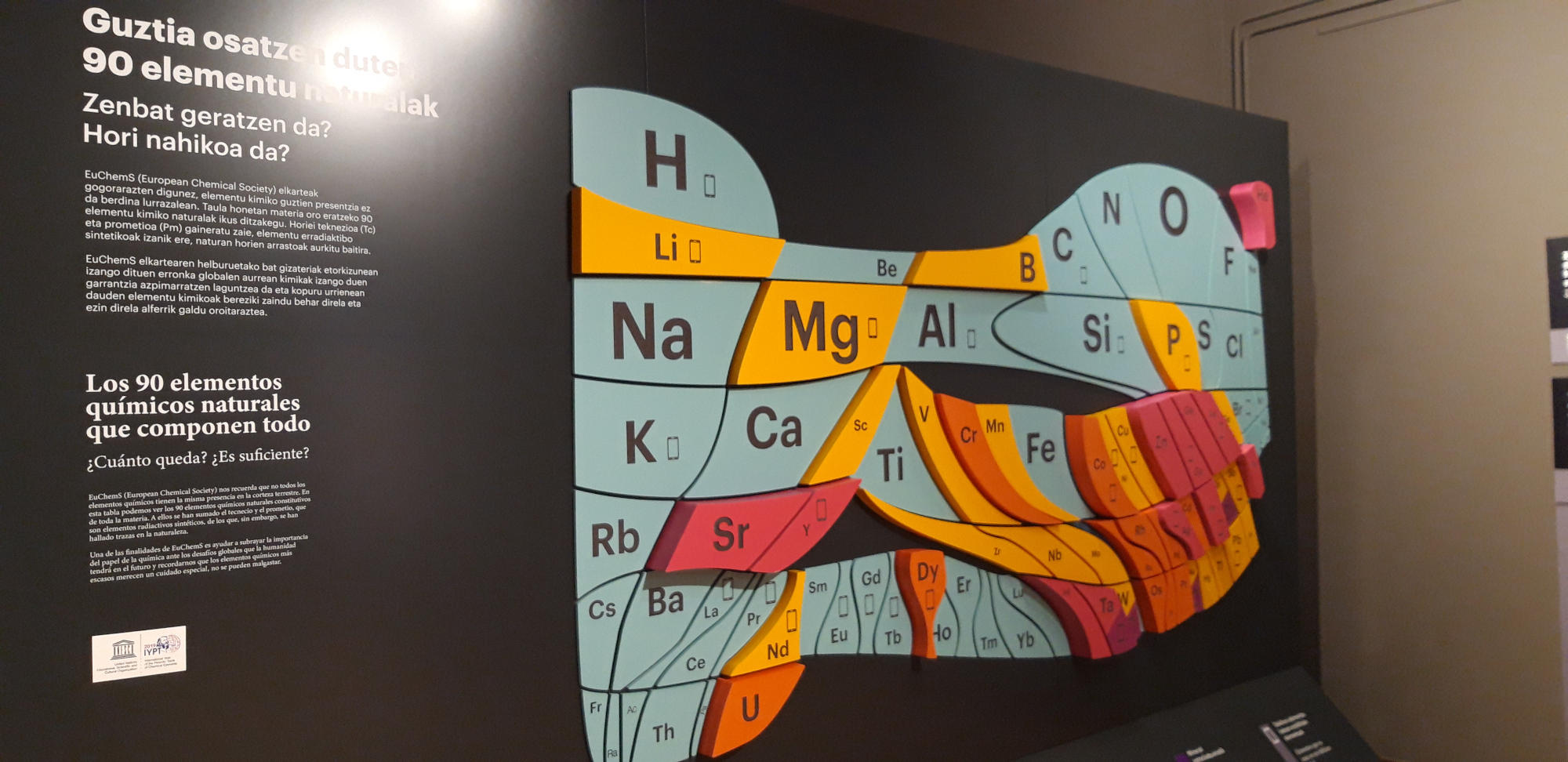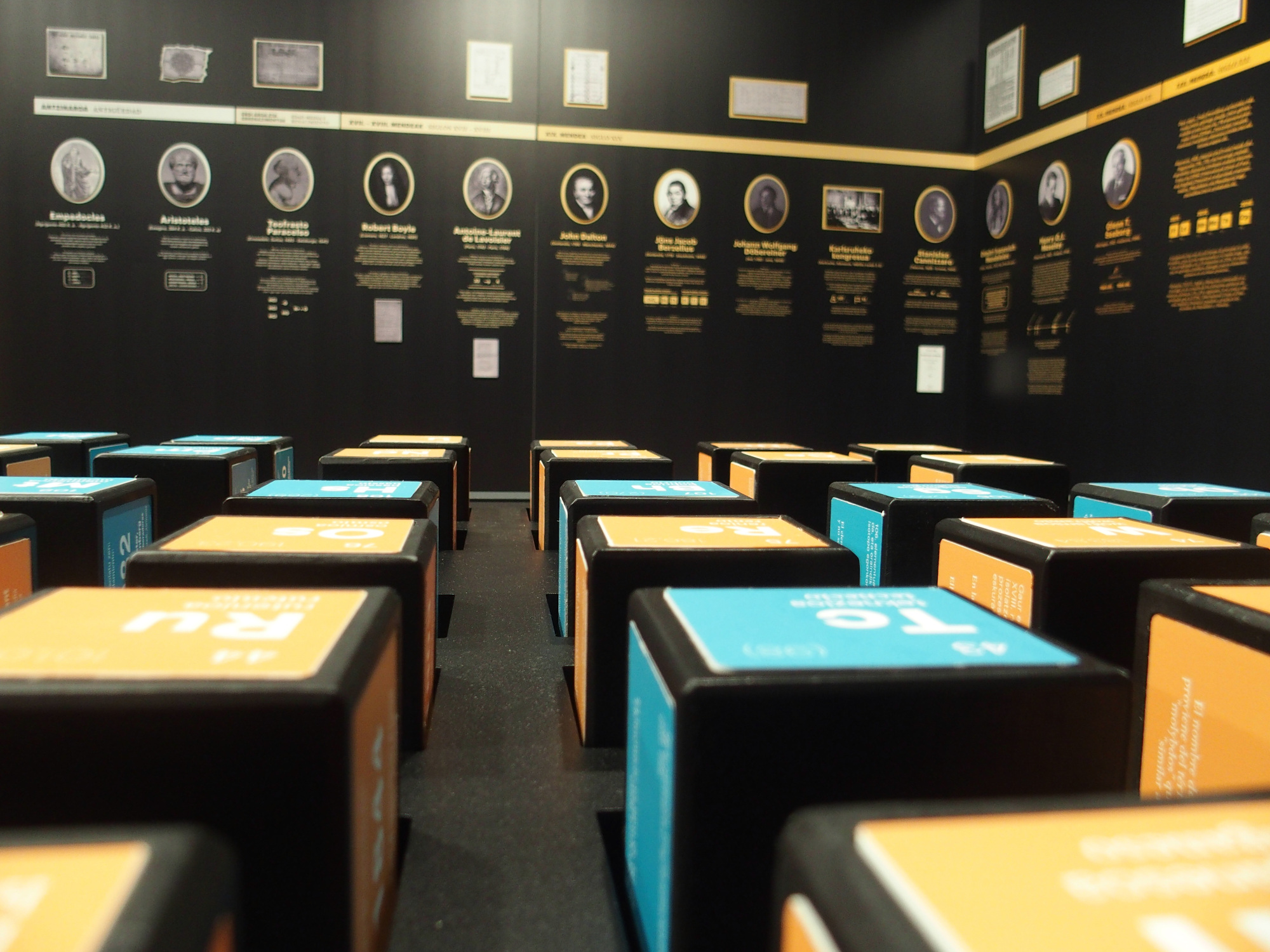The United Nations General Assembly has proclaimed 2019 as the International year of the Periodic Table (#IYPT2019). This year marks the 150th anniversary of the periodic table created by Russian scientist Dimitri Ivanovich Mendeleev in 1869. In this latest version of the table the elements are ordered according to the characteristics of their atoms.
In this exhibition, we show visitors the importance of the invention of the periodic table and pay tribute to the Elhuyar brothers, who in 1783, managed to isolate tungsten in the facilities of the Chemical Laboratory created in 1778 associated with Seminario Patriótico Bascongado de Bergara.
Room 1: Evolution of the Periodic Table
The creation of the periodic table is one of the most representative milestones in the history of science. The first room presents the periodic table in interactive format, its function and its evolution to its current configuration and the characteristics of each of the chemical elements that compose it.
Room 2: Discovery of tungsten and the Elhuyar Brothers
Scientific research aims to provide new facts, data, relationships or laws. In Bergara, it was the Elhuyar brothers who, throudh a scientific method, succeeded in isolating tungsten in 1783. This second space is dedicated to the discovery of wolfram and the importance of Bergara in this discovery.
Room 3: The Abundance Table
In the last room we will learn about the Abundance Table, created by the European Chemical Society (EuChemS) and presented to the European Parliament in 2019. This periodic table collects the natural chemical elements and represents the abundance or scarcity of each of them on Earth. The abundance table will help us to understand which resources we must protect, as they are at serious risk of supply in the coming years.



